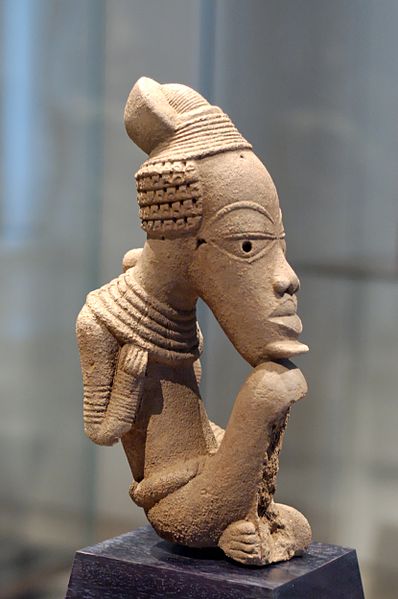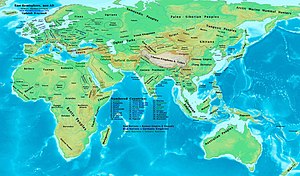cole phelps
Superstar
continued
The independence struggle
Once back in Havana, Gómez met José Martí in 1878, beginning a long friendship founded on shared ideals that united the revolutionary action of both.[5] In that year, he and Martí began conspiring together in preparation for a new uprising; both men were appointed secretary of various revolutionary groups in Havana. Also In 1879, Gómez started the pro-racial justice newspaper The Brotherhood, but its publication was interrupted when he was deported to Spain along with other plotters of the Little War.[5] After arriving in Spain, he spent ten years in Madrid, and wrote for many publications, including Tribuna, El Pueblo, El Progreso[4]–each organs of the Spanish republican movement,[6] and other journals, such as Abolitionism.[5]
After Juan Gualberto Gómez returned to Cuba in 1890,[5] Martí hatched the plot for the opening moves of the revolt and assigned Gómez his deputy to prepare for the upcoming uprising in the La Habana province[1] (which was significantly larger then) and he was able to orchestrate the war preparations right under the noses of the relatively unconcerned Spanish authorities.[7] Martí gave the order for armed uprising on February 24, 1895, and Gómez helped lead the failed uprising of Ibarra, Matanzas.[4] Initial attempts at insurrection fell flat, "mainly because the call to revolution received no immediate, spontaneous support from the masses."[8] The rebellion had yet to gain much momentum in early 1895. "The Province of Puerto Principe, for example, remained so quiet that the Spanish waited until June to declare martial law there."[8]
On February 28, Spanish forces captured Gómez.[9] He was sentenced to 20 years imprisonment in the dungeons of Ceuta and Valencia but only spent three years in prison. After being released, Gómez moved to New York City where he continued to work with fellow revolutionaries.[5] In December 1898, he accompanied Major General Calixto Garcia to Washington, D.C as a member of the commission sent to negotiate for the funds necessary for the Cuban Liberation Army and recognition of the rebels.[5]
During the second U.S. military intervention (1906–1909) he was a member of the Committee of Consultations, the Advisory Committee charged with amending the Cuban constitution,[4][5] and a prominent speaker for the anti-U.S. faction. He famously said, "the Platt Amendment has reduced the independence and sovereignty of the Cuban Republic to a myth."[10] He held seats in the Cuban House of Representatives (1914–1917) and Senate (1917–1925), from the province of Havana. He always campaigned to defend Afro-Cubans from discrimination, oppression, and violence.[4][5]
The independence struggle
Once back in Havana, Gómez met José Martí in 1878, beginning a long friendship founded on shared ideals that united the revolutionary action of both.[5] In that year, he and Martí began conspiring together in preparation for a new uprising; both men were appointed secretary of various revolutionary groups in Havana. Also In 1879, Gómez started the pro-racial justice newspaper The Brotherhood, but its publication was interrupted when he was deported to Spain along with other plotters of the Little War.[5] After arriving in Spain, he spent ten years in Madrid, and wrote for many publications, including Tribuna, El Pueblo, El Progreso[4]–each organs of the Spanish republican movement,[6] and other journals, such as Abolitionism.[5]
After Juan Gualberto Gómez returned to Cuba in 1890,[5] Martí hatched the plot for the opening moves of the revolt and assigned Gómez his deputy to prepare for the upcoming uprising in the La Habana province[1] (which was significantly larger then) and he was able to orchestrate the war preparations right under the noses of the relatively unconcerned Spanish authorities.[7] Martí gave the order for armed uprising on February 24, 1895, and Gómez helped lead the failed uprising of Ibarra, Matanzas.[4] Initial attempts at insurrection fell flat, "mainly because the call to revolution received no immediate, spontaneous support from the masses."[8] The rebellion had yet to gain much momentum in early 1895. "The Province of Puerto Principe, for example, remained so quiet that the Spanish waited until June to declare martial law there."[8]
On February 28, Spanish forces captured Gómez.[9] He was sentenced to 20 years imprisonment in the dungeons of Ceuta and Valencia but only spent three years in prison. After being released, Gómez moved to New York City where he continued to work with fellow revolutionaries.[5] In December 1898, he accompanied Major General Calixto Garcia to Washington, D.C as a member of the commission sent to negotiate for the funds necessary for the Cuban Liberation Army and recognition of the rebels.[5]
During the second U.S. military intervention (1906–1909) he was a member of the Committee of Consultations, the Advisory Committee charged with amending the Cuban constitution,[4][5] and a prominent speaker for the anti-U.S. faction. He famously said, "the Platt Amendment has reduced the independence and sovereignty of the Cuban Republic to a myth."[10] He held seats in the Cuban House of Representatives (1914–1917) and Senate (1917–1925), from the province of Havana. He always campaigned to defend Afro-Cubans from discrimination, oppression, and violence.[4][5]











 I forgot about this thread subz for later
I forgot about this thread subz for later